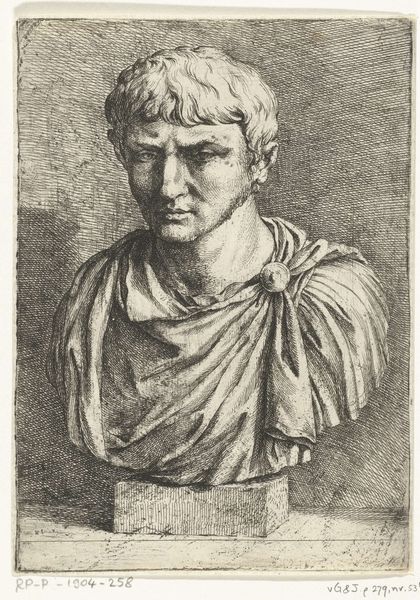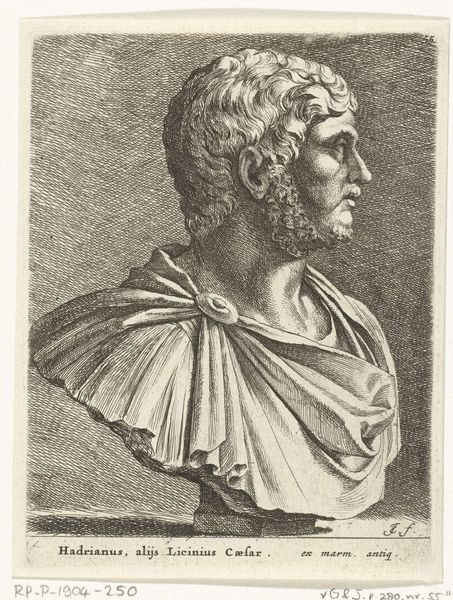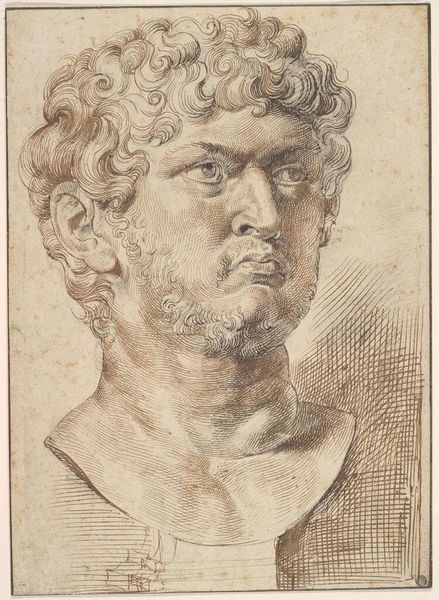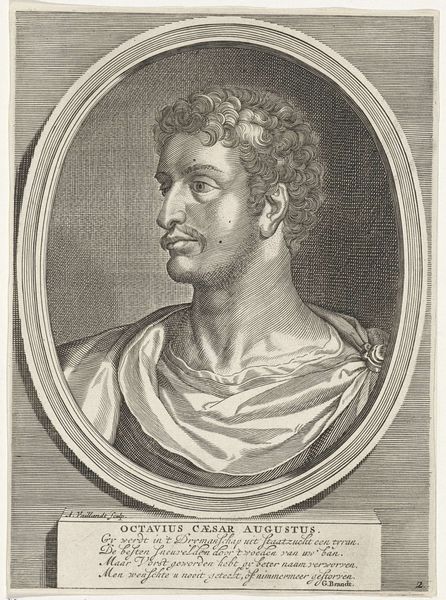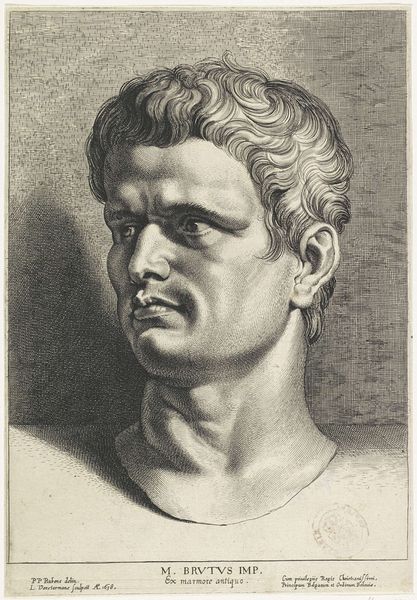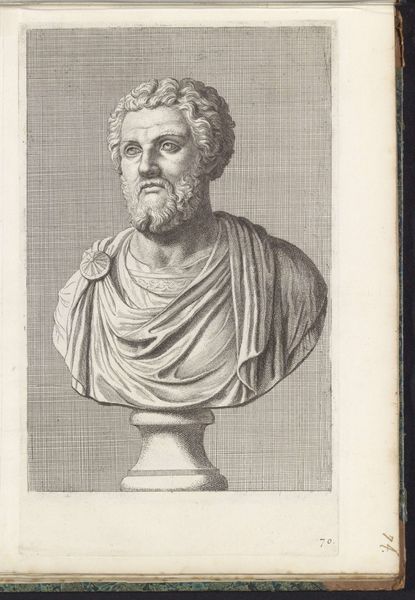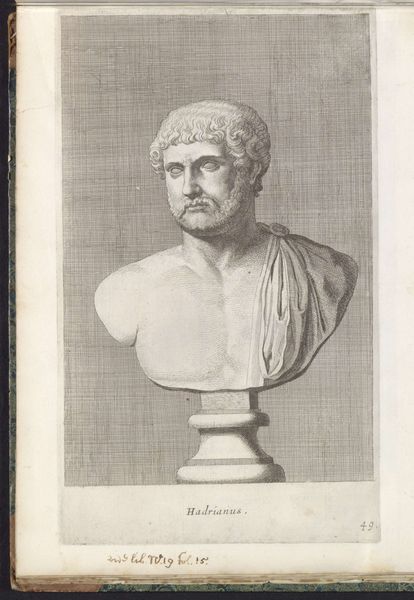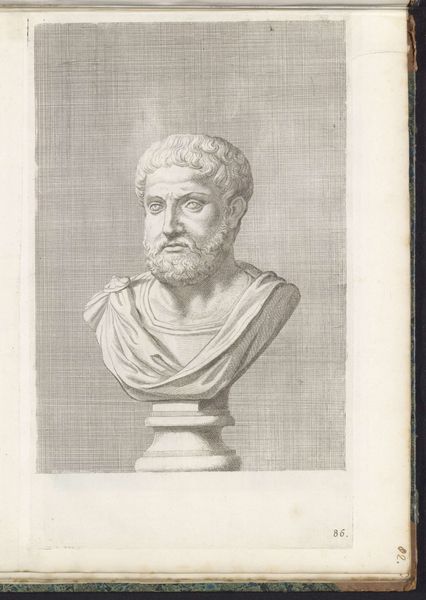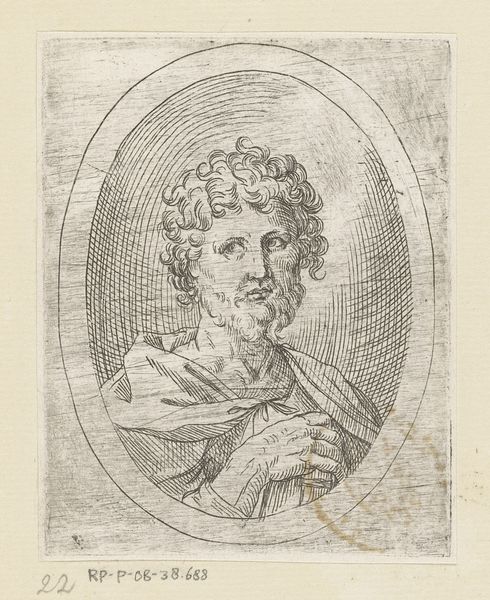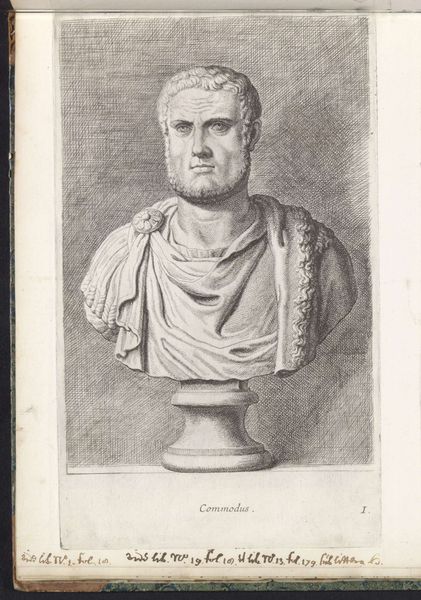
drawing, print, engraving
#
portrait
#
drawing
#
baroque
# print
#
engraving
Dimensions: sheet: 12 5/16 x 7 7/8 in. (31.3 x 20 cm)
Copyright: Public Domain
Curator: Oh, this gives me the shivers. The brooding intensity practically vibrates off the page. Editor: And it's a powerful vibration. This engraving, "Nero (after Rubens)," was completed in 1638 by Paulus Pontius, based on a Rubens drawing, and depicts Nero as an antique bust. The original may have been inspired by a now lost marble bust. Pontius perfectly renders the complexities of the man, or at least the image of him they wanted us to believe. Curator: It is theatrical, wouldn't you agree? Almost Shakespearean in its drama. You can almost hear the whispers of ambition and tyranny echoing from those sharply etched lines. It's like looking into a mirror of power, isn't it? Scary and beautiful. Editor: Absolutely. And this is a very purposeful rendering of power and representation. Notice the choice of medium: engraving. In replicating a Roman bust through printmaking, Pontius taps into the very core of what portraiture was during the Baroque period. Prints could circulate ideas about power widely, solidifying political messages throughout Europe. What Nero represents is secondary to *how* that representation operates. Curator: That’s a really fascinating point. It's like he’s being duplicated and unleashed on the world! It’s interesting that he did this rendering based on Rubens; it looks like an embrace of complexity. Pontius isn’t making Nero into some simplistic villain—the beauty is still there. Editor: The aesthetics definitely matter here. The crisp lines of the engraving serve to not only immortalize the bust, but to elevate it, and Nero along with it. This romantic ideal of a leader, even one as violent as Nero, perpetuated in visual culture is meant to awe and even inspire audiences of the time. We can learn a lot from this tension. Curator: It almost feels like a challenge—dare we be seduced? Even with knowledge of Nero’s...tendencies. Maybe it speaks to the way beauty, like power, can corrupt. A potent thought. Editor: I agree. And looking at the piece in this setting can also make us consider art's complicity in shaping power throughout history, too. Curator: Hmm. Something to consider, always. Editor: Indeed. Let’s move on.
Comments
No comments
Be the first to comment and join the conversation on the ultimate creative platform.
